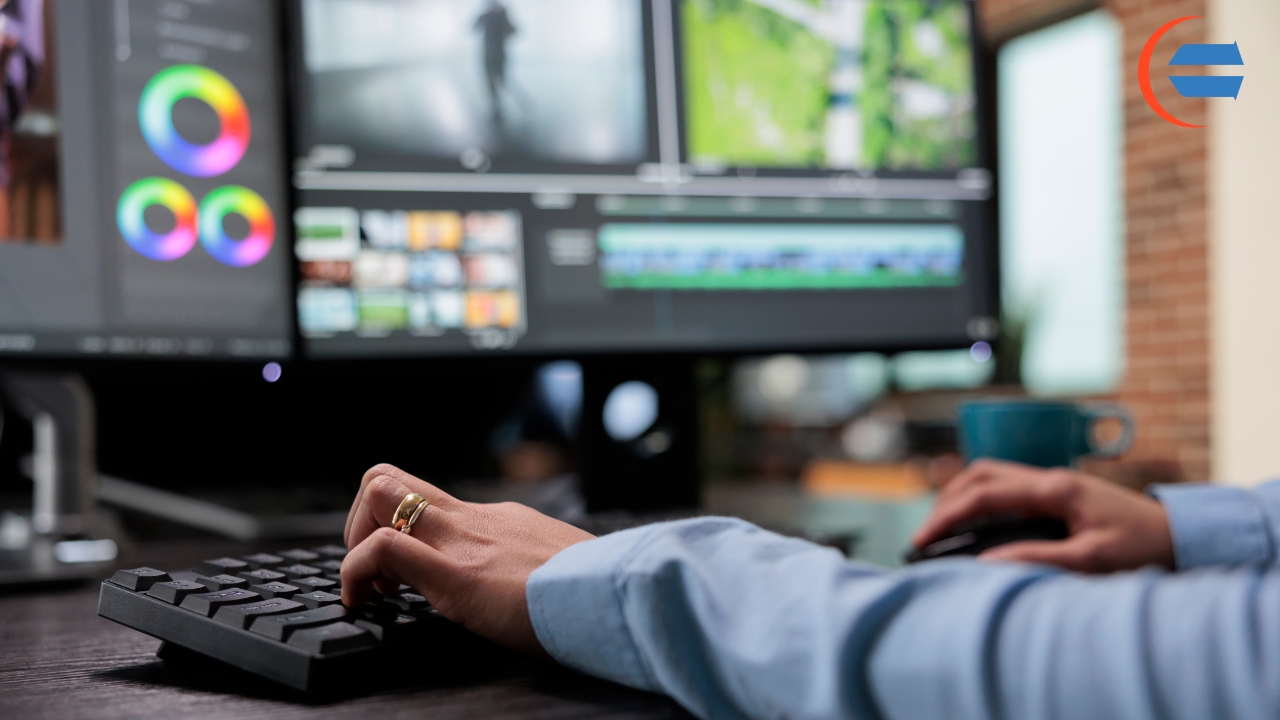Video editing is not easy work, hard work, but it has some passion. Advanced video editing is the way to make any footage look cinematic and present it in the best possible way. Advanced video editing techniques go beyond basic cutting and transitions to improve storytelling, pacing, and visual impact. Here are some key methods used by professionals:
1. Color Grading
- What it is: Color grading involves adjusting and enhancing the color of your video to create a specific mood or look. It’s often used to maintain color consistency and to evoke emotional responses.
- How it works: In software like DaVinci Resolve or Adobe Premiere Pro, color grading tools give you control over highlights, mid-tones, and shadows. You can also use LUTs (Look-Up Tables), which apply a preset look, to speed up the grading process.
- Common uses: This is often used in cinematic projects, such as films and commercials, where color is a key part of storytelling.
- Pro tip: Use color wheels and adjustment layers in post-production to ensure consistency across scenes.
2. Motion Tracking
- What it is: Motion tracking allows you to attach text, graphics, or effects to objects or people that move within your video.
- How it works: Programs like After Effects have built-in motion-tracking tools. You select the object to track, and the software follows its movement frame-by-frame, allowing you to attach other elements to it.
- Common uses: Used in adding floating text, replacing screens, or applying visual effects to moving objects.
- Pro tip: For more accurate tracking, use high-contrast points or elements with clear edges. If needed, manually adjust keyframes to improve accuracy.
3. Masking and Rotoscoping
- What it is: Masking hides parts of your video, while rotoscoping is a frame-by-frame process used to isolate a moving object or person from its background.
- How it works: You can use masks in Premiere Pro or After Effects to create precise areas where effects are applied or to composite different elements. Rotoscoping in After Effects can isolate objects for special effects.
- Common uses: Rotoscoping is often used in visual effects-heavy films to remove backgrounds or create custom transitions.
- Pro tip: Rotoscoping is tedious but crucial in complex VFX. Use automation features like the Rotobrush tool in After Effects to save time.
4. Speed Ramping (Time Remapping)
- What it is: Speed ramping refers to changing the speed of your video dynamically to highlight or slow down key moments.
- How it works: In software like Premiere Pro, right-click on the clip, select “Time Remapping” and adjust speed keyframes. You can smoothly ramp from normal speed to slow motion or even to fast motion.
- Common uses: Used in action scenes, sports highlights, and dramatic moments to enhance tension or emphasize a movement.
- Pro tip: Plan speed ramps with your audio in mind. Speeding up or slowing down footage can disrupt audio sync, so use sound effects or music to mask changes in speed.
5. Cinematic Transitions of video editing techniques
- What it is: These transitions make scene changes seamless or more visually engaging, often using complex techniques like match cuts, whip pans, or morph cuts.
- How it works: Match cuts involve cutting between two visually similar shots, while whip pans are fast, motion-heavy transitions that blur the frame.
- Common uses: Used in high-energy or creative projects like music videos, action scenes, or commercials.
- Pro tip: Plan these transitions while filming for better results in post-production. Make sure the camera motion or object placement in one shot naturally leads into the next.

6. Green Screen (Chroma Keying)
- What it is: Green screen (or chroma keying) involves shooting against a green or blue background, which is then removed in post-production to composite a different background or effect.
- How it works: In editing software like After Effects or Premiere Pro, the Chroma Key tool allows you to remove the green background and replace it with another image or video.
- Common uses: Used in weather broadcasts, VFX-heavy films, and virtual environments.
- Pro tip: Ensure even lighting on the green screen to avoid shadows or bright spots, which can make keying difficult. Keep your subject away from the green screen to prevent spill (green light reflecting on the subject).
7. Multicam Editing
- What it is: This technique allows you to edit footage from multiple cameras filming the same event or scene simultaneously.
- How it works: Most editing software, like Adobe Premiere Pro or Final Cut Pro, has a multicam feature that lets you sync multiple camera angles (usually via sound) and switch between them seamlessly in the timeline.
- Common uses: Used in live events, concerts, or interviews, where different angles are necessary for coverage.
- Pro tip: Use audio waveforms or timecode to sync the clips. The ability to toggle between angles on the fly while maintaining audio continuity makes multicam editing a powerful time-saving technique.
8. Stabilization
- What it is: Video stabilization reduces camera shake and makes handheld footage appear smoother.
- How it works: In Premiere Pro, use the Warp Stabilizer effect, which analyzes the motion in your video and applies corrections to smooth out jerky movements.
- Common uses: Often used for handheld footage in documentaries, travel videos, or action scenes.
- Pro tip: Stabilization works best on clips that are only slightly shaky. For extreme shake, especially in close-up shots, it may introduce unwanted artifacts, so it’s better to use a gimbal during filming if possible.
9. Keyframing
- What it is: Keyframes control the changes in parameters like opacity, position, scale, or rotation over time, allowing for smooth transitions or dynamic movements in your video.
- How it works: In Premiere Pro or After Effects, set keyframes to mark a change’s start and end points (e.g., moving a graphic across the screen or adjusting the intensity of an effect).
- Common uses: Animation, visual effects, transitions, and adding life to static elements.
- Pro tip: Use easing (ease in/out) to make keyframe transitions look more natural. Linear transitions can feel robotic.
10. Audio Mastering
- What it is: Audio mastering ensures that dialogue, music, and sound effects are balanced and polished.
- How it works: Use audio tools like Adobe Audition, Premiere Pro, or Final Cut Pro to mix and master your audio tracks. You can adjust levels, add compression, reduce noise, and fine-tune EQ settings.
- Common uses: Audio mastering is vital for any project with dialogue or music, such as interviews, short films, or documentaries.
- Pro tip: Pay attention to background noise and room tone to make the audio sound consistent across clips. Use crossfades to smooth out transitions between different audio tracks.
These advanced techniques take time to master, but with practice, they can dramatically elevate the quality of your projects, helping you achieve professional-level results. This Video Editing Techniques are essential for all video editing work. if anyone can gather Video editing techniques, which are developed for any videos.
Tags: Advanced Video Editing Techniques, technique of video editing, video editing, video editing process
